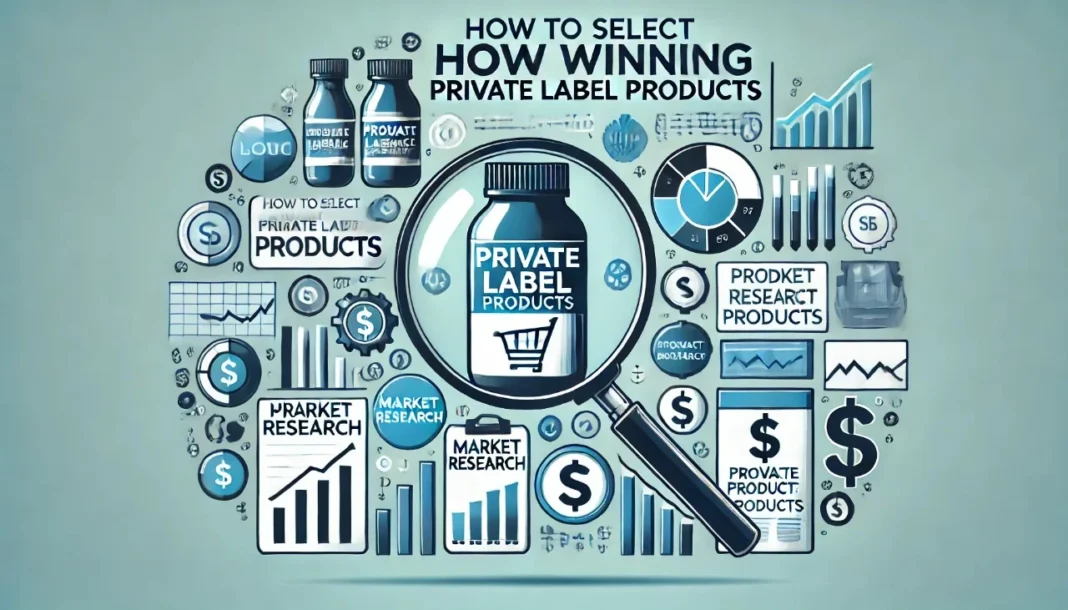If you want to succeed with private label products, picking the right ones is the key. A winning private label product meets customer needs, offers quality, and stands out from the crowd. By understanding what customers want, keeping an eye on trends, and focusing on quality, you can boost your chances of success. Here’s a simple guide to help you choose private label products that will sell well and keep customers coming back.
At Daily GSN Magazine, we bring you practical advice like this to help you grow in the supermarket business. Read on to learn how to master “private label product selection” in simple steps.
Understanding Private Label Products
Private label products are items that a store sells under its own brand name. These products are made by other manufacturers, but they carry the store’s own label and branding. Many stores create private label lines to offer customers more choices, often at lower prices. Private labels can cover everything from food and beauty items to cleaning products and even clothes. Today, private labels are very popular because they let stores offer unique, affordable items that keep customers coming back.
For private label product selection, stores look for products that will sell well and fit with their brand image. Stores want products that are reliable, high-quality, and profitable. Let’s look at what to consider when selecting private label products that will be successful.
What Makes a Good Private Label Product?
A good private label product must do three main things:
- Meet customer needs
- Stand out in the market
- Offer consistent quality
When you focus on these points, you’ll be better able to select private label products that sell well. But how can you find these winning products? Here are some proven tips to guide you.
Key Steps for Private Label Product Selection
Step 1: Know Your Market
Start by researching the market and your customers. Understand who shops at your store, what they like, and what they need. Look at popular products in your store, and see if there’s room for a private label version of those items. For example, if healthy snacks are popular, a private label version of those might be a good idea.
Step 2: Identify Trends
Following trends is a big part of private label product selection. Trends show you what’s new, what customers are interested in, and where the market is going. For example, in recent years, eco-friendly and organic products have become very popular. Customers want products that align with their values, such as sustainability or health. If you notice a growing trend, you can use it as a starting point for new private label products.
Step 3: Focus on Quality
Quality matters a lot. Customers want private label products they can trust. Poor quality can hurt your brand image and drive customers away. Always test your products, ensure high standards, and work with manufacturers who care about quality.

Private Label Product Selection Tips
1. Look for Gaps in the Market
When choosing private label products, look for products that aren’t readily available. By offering unique items, your private label products can stand out. For instance, if there are few organic snacks in your area, filling this gap can attract health-conscious customers. Identifying gaps means spotting what’s missing and meeting that need with your private label line.
2. Check Competitor Success
Look at what products other stores are offering. If a competitor has a successful private label line, think about why it works. This can give you ideas for your own products. For example, if a competitor’s private label cleaning products sell well, this may be a great category for you too.
Marketing Your Private Label Products
Selecting private label products is just the first step. Marketing plays a big role in making them successful. Make sure to promote your private label products, both in-store and online. Use eye-catching packaging, offer special discounts, and place products in high-traffic areas. For example, if you have a private label food line, consider putting it near popular branded items so customers notice it.
A strong online presence can also help. Share updates about your private label products on social media, include them in email newsletters, and provide details on your store’s website. These steps help raise awareness and attract more customers to your private label line.
Pricing Your Private Label Products
Pricing is a big factor in private label product selection. One reason customers love private labels is because they’re often cheaper than brand-name items. Aim to set prices slightly lower than similar branded items, without compromising quality. Affordable pricing gives customers a reason to choose your private label, which builds loyalty and trust.
Tips for Pricing:
- Research competitors: Look at how similar private label items are priced in other stores.
- Balance costs: Ensure your pricing covers costs but remains attractive to shoppers.
- Offer value: Customers are more likely to buy private label products if they feel they’re getting good value for their money.
Track Customer Feedback on Private Labels
To know if your private label products are winning, track customer feedback. Feedback gives you real insight into what customers like and what they don’t. Many stores use surveys, in-store feedback, or online reviews to understand how customers feel. If feedback shows that certain products are very popular, consider expanding that category. If some items receive negative feedback, think about improving them or offering something new.
Private Label Product Selection in a Nutshell
Private label products are a great way for supermarkets to stand out and increase profits. But selecting the right products is crucial. By understanding customer needs, following trends, and focusing on quality, you can pick private label products that succeed in the market.
So, if you’re in charge of private label product selection for your store, remember these tips. Choose products that meet customer needs, stand out, and offer quality. By following these strategies, your private label products can become best-sellers and keep customers coming back for more.
For more supermarket insights and strategies, keep reading Daily GSN Magazine – we cover all the top trends to help you succeed!

